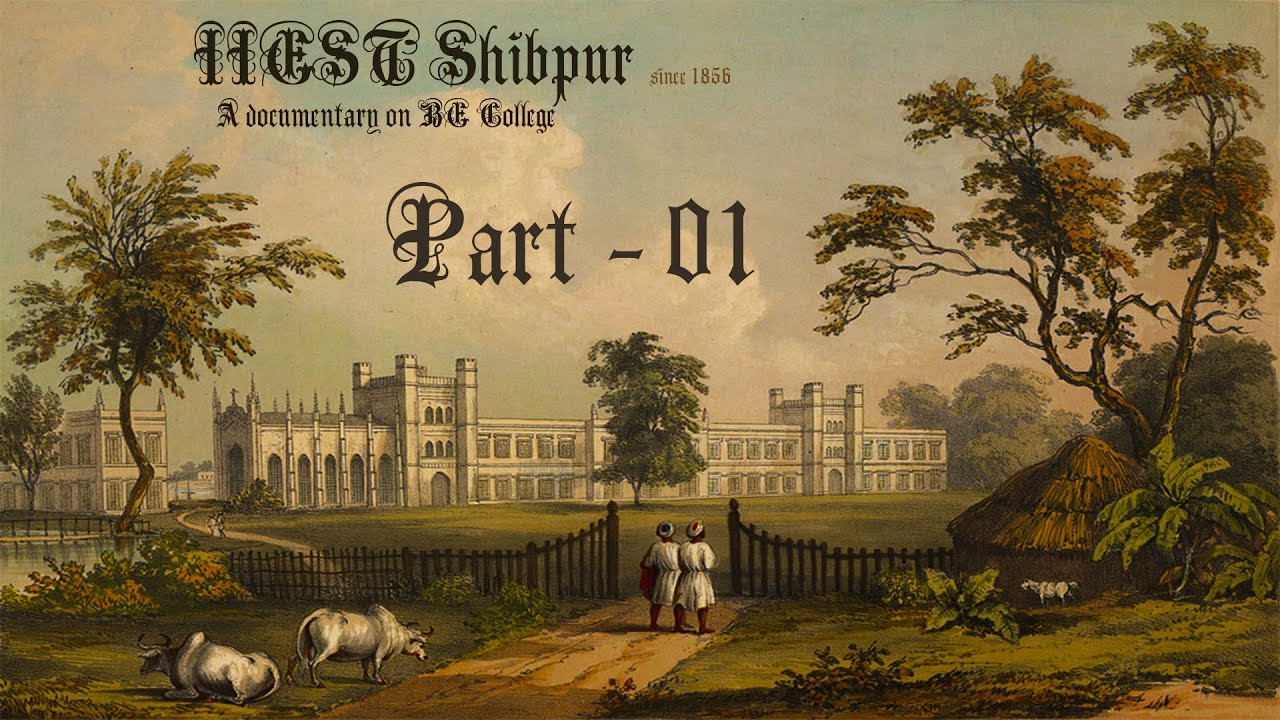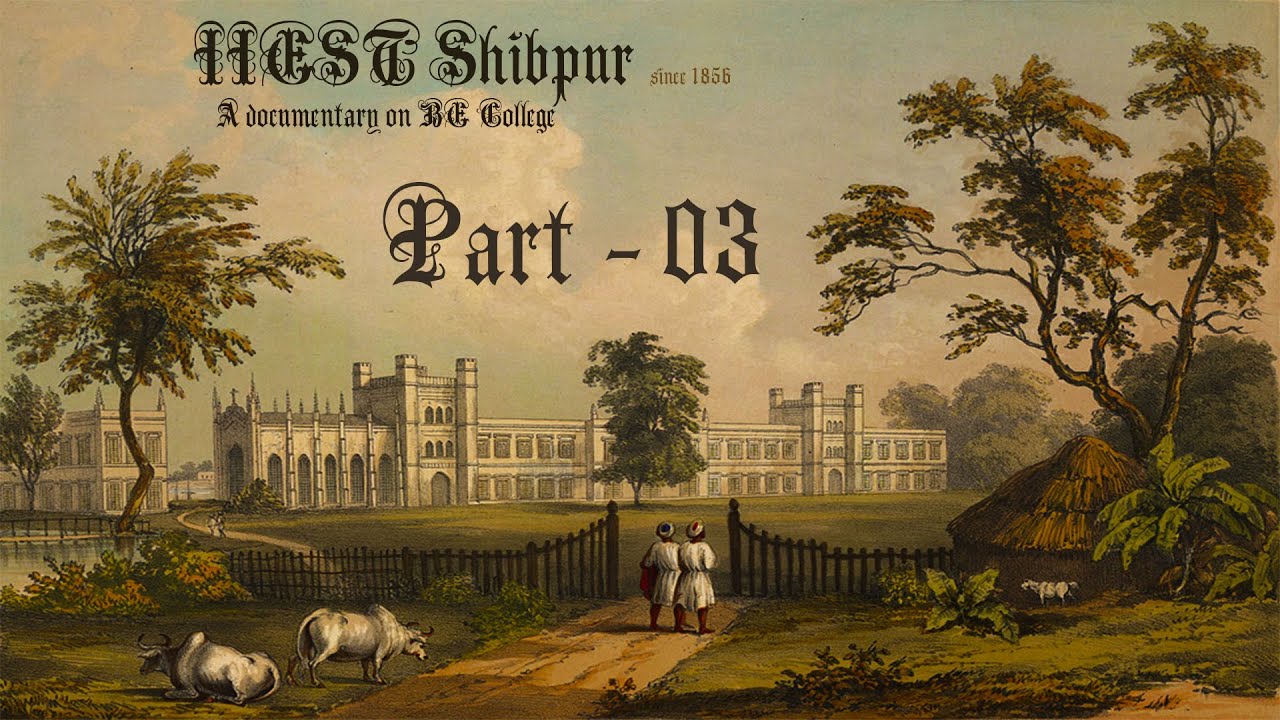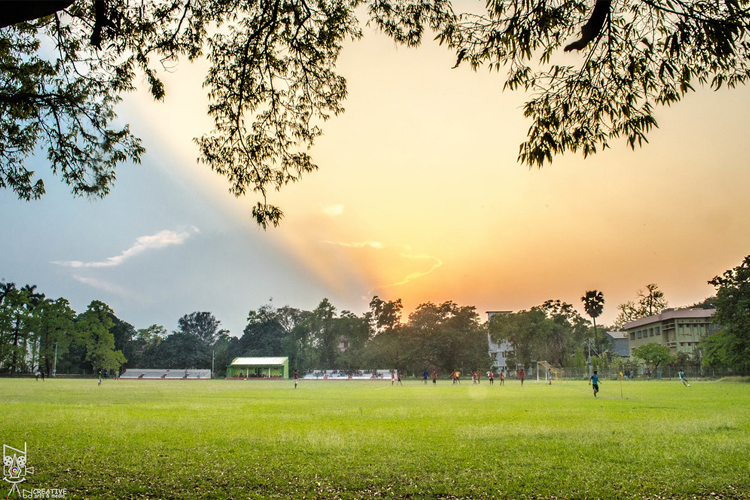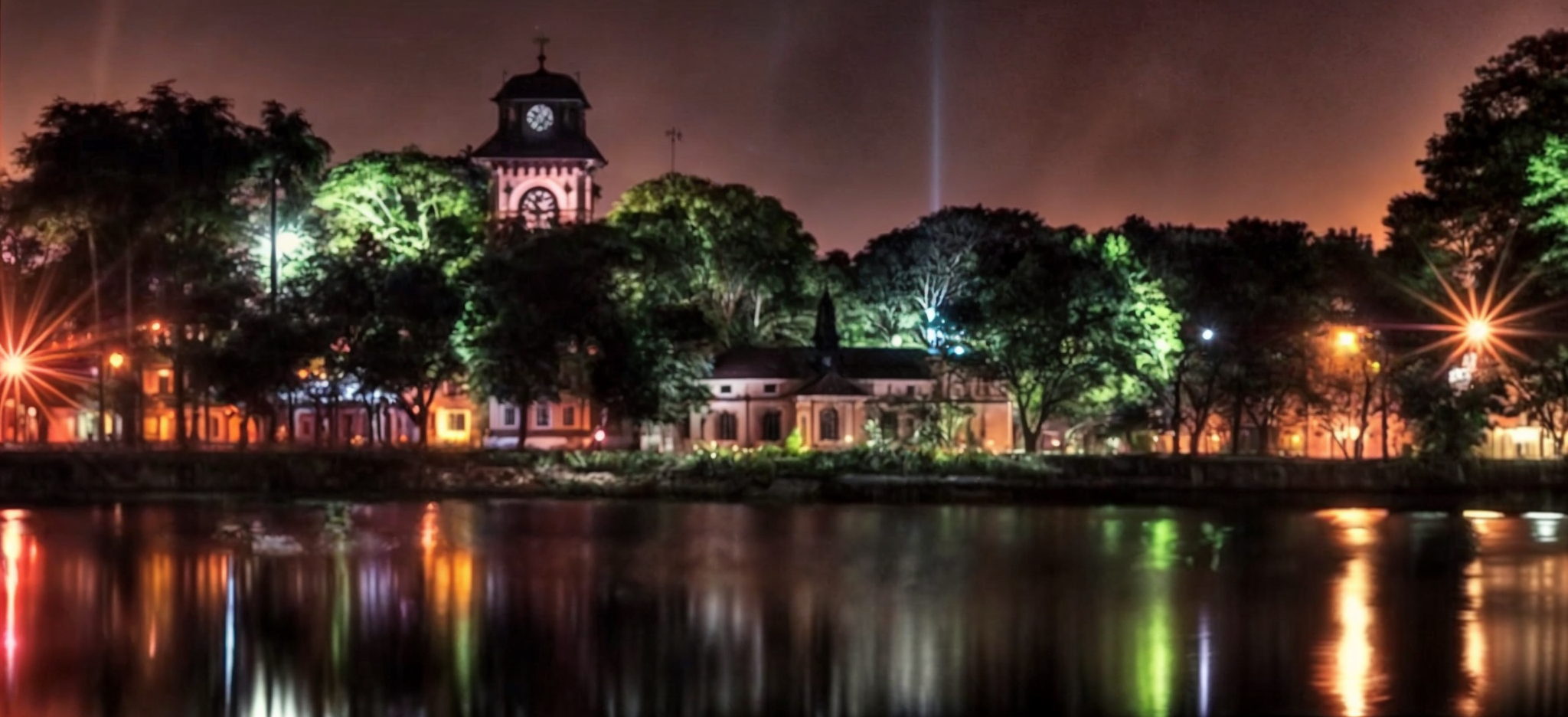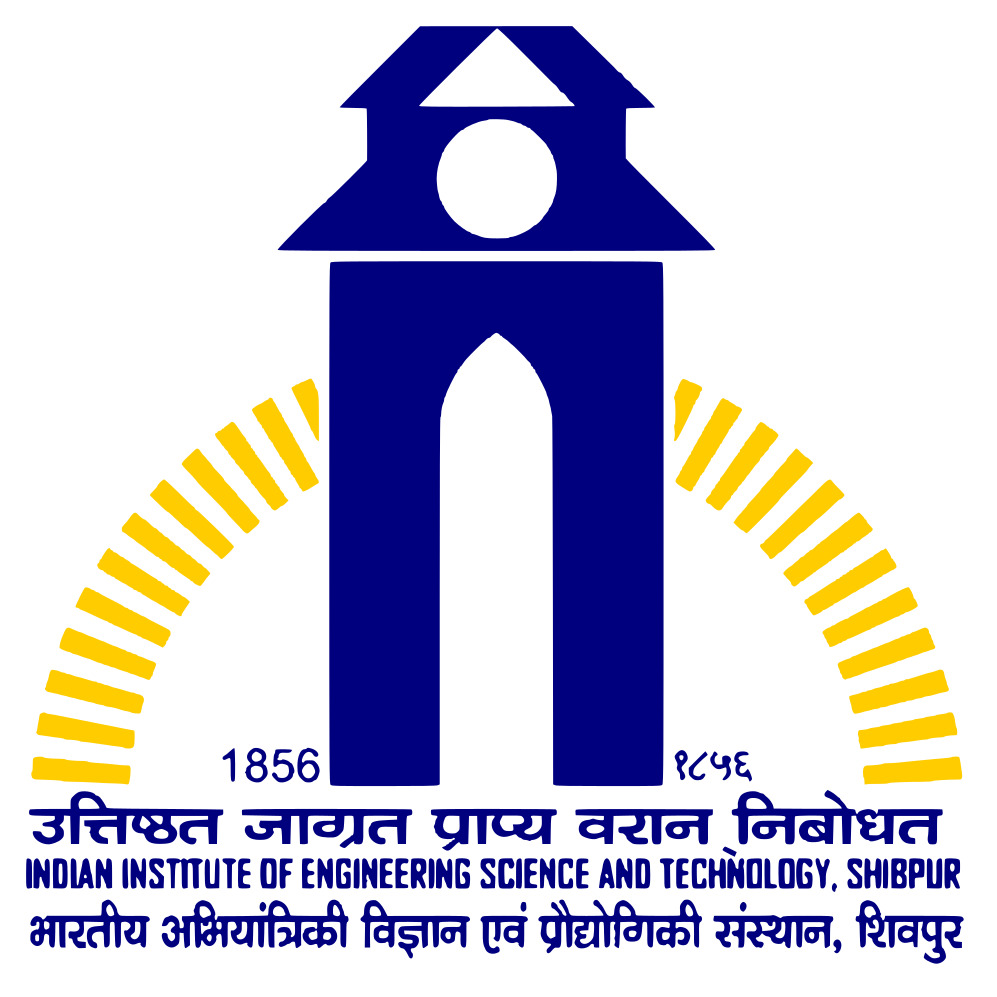
Indian Institute of Engineering Science and Technology, Shibpur owes its origin to the erstwhile Bengal Engineering College, the history of which goes to the nineteenth century when industries in the sense we understand today, were practically absent. Prompted by the idea of meeting requirement of trained engineering personnel for the Public Works Department, the then council of Education, Bengal, decided to open Civil Engineering classes and a Professorship in Civil Engineering was created at Hindu College, Calcutta, in the year 1843-44. A College of Engineering was started by the name of Civil Engineering College on 24th November, 1856, in the premises of the Writers Building, Calcutta.
With the establishment of Calcutta University on January 24, 1857, the college was affiliated to this university in May 1857. The first-degree examination in Bachelors of Civil Engineering was held in 1864 in which only 2 students graduated. In 1865, the college merged with Presidency College, Calcutta and from 1865 to 1869 the college functioned as the Civil Engineering Department of Presidency College. In 1880, the college was shifted to its present campus at Shibpur, Howrah, and was christened the 'Government College, Howrah,' in the premises of Bishop's College. It started imparting training in Civil as well as Mechanical Engineering. The college became wholly residential from the year 1889.
In 1921, the name of the college was changed to 'Bengal Engineering College' (popularly known as B.E.College). During 1921-43, the various departments of the college were reorganized on the recommendation of the 'Mukherjee Committee' under the Chairmanship of Sir R.N. Mukherjee, one of the most distinguished ex-students of the college. The first batch of students in Mechanical Engineering appeared in the degree examination in 1932. The degree course in Electrical Engineering was introduced during 1935-36 and that in Metallurgical Engineering in 1939. The department of Humanities started in 1945, Applied Mechanics in 1947, and In 1954, postgraduate courses in Civil, Mechanical, Electrical, and Metallurgical were introduced. A postgraduate certificate course in Naval Architecture was also introduced during this period. Doctoral programs were also introduced at this time and approved by Calcutta University to enhance research activities (which started as far back as 1901) in the college. During 1954-55, an agreement was concluded by this college and the University of Wisconsin, USA, whereby six guest professors from the USA joined the college and in exchange, five teachers from the college went to the USA as Research Associate. This scheme, known as Technical Co-operation Programme of the USA, helped the college in developing laboratories, postgraduate programmes and research facilities.
The college celebrated its gala centenary function inaugurated by Dr. B.C. Roy on the 25th of December 1956 and Pandit Jawarlal Nehru graced concluding session on 14th January 1957. The department of Electronics & Telecommunications Engineering was sanctioned in 1956. The department of Mining Engineering started functioning in 1956. The introduction of a Teachers' Training course during 1959-60 was a noteworthy event. The college started its first Computer Centre in 1976-77 and a Microprocessor Laboratory in this centre in 1979. The 125th Anniversary of the college was celebrated in December 11, 1981, with inauguration by Sri N. Sanjiva Reddy, the then President of India.
In 1982, a new degree course in Computer Science & Technology was started and with modernization of the facilities, this department started offering the Master of Engineering courses in 1988 and Master of Computer Applications courses in 1991.
The alumni of the college have occupied or are occupying top positions in various national and international organizations. In recognition of its yeoman's service to the nation for 143 years of its existence with its well organized infrastructure, the college was elevated to the status of a "Deemed University" in 1992 by the Ministry of Human Resource Development, Government of India on the recommendation of a UGC Expert Committee. As a result, Dr. SankarDayal Sharma, the President of India, inaugurated the University in March 1993.
In 2004, B.E. College (Deemed University) was converted into a full-fledged university by an act in the West Bengal Assembly and renamed as Bengal Engineering and Science University, Shibpur. In addition to the tradition engineering disciplines, the university started M.Sc curriculum in basic sciences.
In March 2014, Bengal Engineering and Science University, Shibpur was taken over by the Government of India and converted into an Institute of National Importance through an act of parliament and renamed as Indian Institute of Engineering Science and Technology, Shibpur.
THE SECOND OLDEST ENGINEERING COLLEGE IN INDIA
The Roorkee Engineering College established in the year 1847 AD and recognized as the first Engineering College in India. The Government Engineering College, Pune established in the year 1854. The Bengal Engineering College established in the year 1856. The first batch of degree course in Civil Engineering turned out in 1912 from Pune Engineering College whereas the first batch in Civil Engineering passed out from B.E.College, in@the year 1864. Therefore, if we consider the year of establishment the B.E.College will be the third engineering college in India. However, considering the year of graduation our B.E.College stands as the 2nd oldest Engineering College in India.
Roorkee College was Establish in 1847 AD as the first Engineering College in the British Empire. The College was renamed as THOMASON COLLEGE OF CIVIL ENGINEERING in 1854. It was given the status of a University by Act No. IX of 1948 of U.P., Govt. in recognition of its performance and its potential and keeping in view the needs of post-independent INDIA.Pt. JawaharLal Nehru, the first Prime Minester of India, presented the Charter in November 1949 elevating the erstwhile college to the first Engineering University of independent India."


